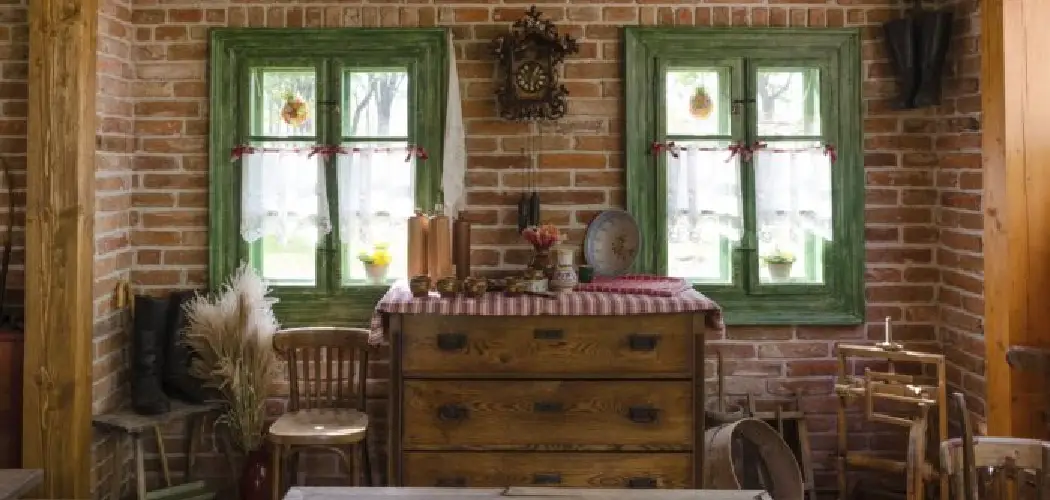Are you looking to give your kitchen a homey makeover that will catch the eye of all who enter? Look no further! There’s nothing quite like custom-crafted furniture to create an inviting atmosphere in a room, but with many designer pieces coming at a hefty price tag, it can be hard for homeowners to afford.
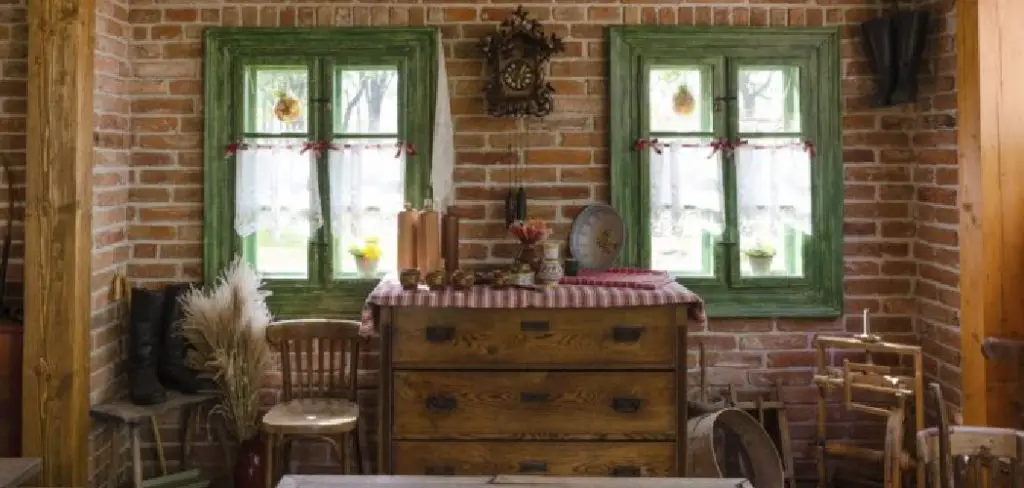
Luckily there is an easier, and more affordable way to achieve this look: transforming ordinary store-bought kitchen cabinets into stylish pieces of furniture.
In this article on how to make kitchen cabinets look like furniture, we’ll show you a few simple tricks and techniques that are sure to upgrade the feel of your kitchen – without breaking the bank. Keep reading for our step-by-step guide on how to make your cabinets look like they belong in a dream home!
Needed Materials
First things first, let’s go over the materials you’ll need to get started with this project. Depending on your design preferences and skill level, these may vary slightly from person to person.
- Sandpaper (120 Grit)
- Tack Cloth
- Primer
- Paint or Stain of Choice
- Paintbrushes and Rollers
- Clear Coat Sealant (Optional)
- Decorative Hardware (Optional)
- Screwdriver or Drill
Now that you have everything ready, let’s get to the fun part – transforming your kitchen cabinets!
12 Step-by-step Guidelines on How to Make Kitchen Cabinets Look Like Furniture
Step 1: Preparing the Cabinets
Before you can start painting, it’s important to properly prep your cabinets. Start by removing all hardware such as knobs and handles. If you plan on changing the hardware, now is the time to remove it.
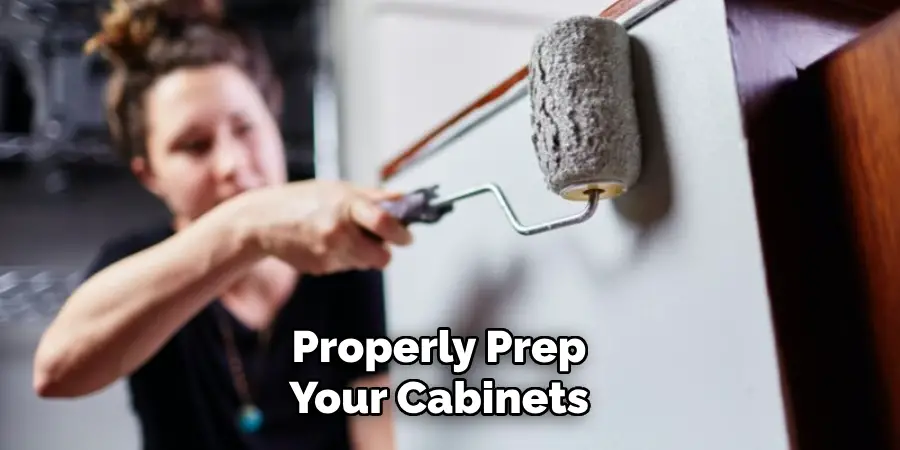
Next, use sandpaper to lightly roughen up the cabinet surfaces. This will help the primer adhere better and ensure a smooth finish. Once sanded, wipe down the surfaces with a tack cloth to remove any dust or debris.
Step 2: Priming
Priming is an essential step in making sure your cabinets look like furniture. It helps the paint or stain adhere better and creates a smooth, even base for your finish. Using a high-quality primer, apply a thin coat to all surfaces of your cabinets. Be sure to follow the manufacturer’s instructions and allow sufficient drying time before moving on to the next step. It’s best to do this in a well-ventilated area or outdoors. You can also use a primer and paint combination for quicker results.
Step 3: Choosing Your Finish
There are many options when it comes to choosing the finish for your cabinets. You can opt for a classic paint finish, a stained wood look, or even a distressed antique-inspired finish. Whichever you choose, make sure it complements the rest of your kitchen and suits your personal style. But remember, for the furniture look, it’s best to choose a matte or satin finish rather than a glossy one.
Step 4: Painting
Using a paintbrush or roller, apply your chosen finish to all surfaces of your cabinets. Make sure to use long, even strokes for a smooth and professional finish. If you want to achieve an antique look, consider lightly distressing the edges with sandpaper after the paint has dried.
It’s always a good idea to do a second coat for a more opaque finish. Let the paint dry completely before moving on to the next step. But if you’re going for a stained look, skip this step and move on to staining.
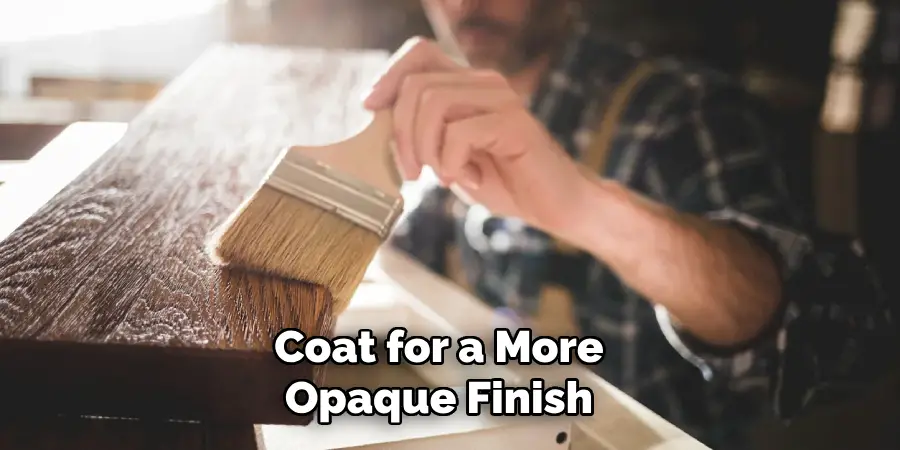
Step 5: Adding Decorative Hardware
Adding new hardware can instantly transform the look of your cabinets. Consider choosing hardware that resembles furniture pieces, such as decorative knobs or pulls with intricate designs. This will further enhance the furniture-like appearance of your cabinets. This is also a good time to replace any hardware that was removed in the first step. It’s best to use a screwdriver or drill for this task.
Step 6: Applying a Clear Coat (Optional)
If you want your cabinets to have a longer lifespan and added durability, consider applying a clear coat sealant. This will protect your finish from scratches, stains, and other wear and tear. Simply follow the instructions on the can for application and allow sufficient drying time before moving on to the next step. It’s always better to be safe than sorry!
Step 7: Reinstalling Hardware
Now that your cabinets are fully painted and sealed, it’s time to reattach any hardware you removed in the beginning. This is also a good opportunity to replace old or damaged hardware with new ones. You’ll be surprised by how much of a difference this small change can make. But if you prefer a more minimalistic look, not adding any hardware is also an option. It all depends on your personal taste.
Step 8: Installing Furniture Legs (Optional)
To truly give your cabinets a furniture-like appearance, consider installing furniture legs on the bottom. This will elevate your cabinets and create an illusion of freestanding pieces rather than built-in ones. You can find furniture legs at most home improvement stores and simply screw them into the bottoms of your cabinets. You can also paint the legs to match your cabinets or leave them in their natural wood finish.
Step 9: Adding Decorative Molding (Optional)
Another way to make your cabinets look like furniture is by adding decorative molding to the tops of the cabinets or along the edges. This will give them a more custom-built feel and add character to your kitchen. You can choose from a variety of styles and finishes to match your overall design. You can either nail or glue the molding in place, depending on your preference.
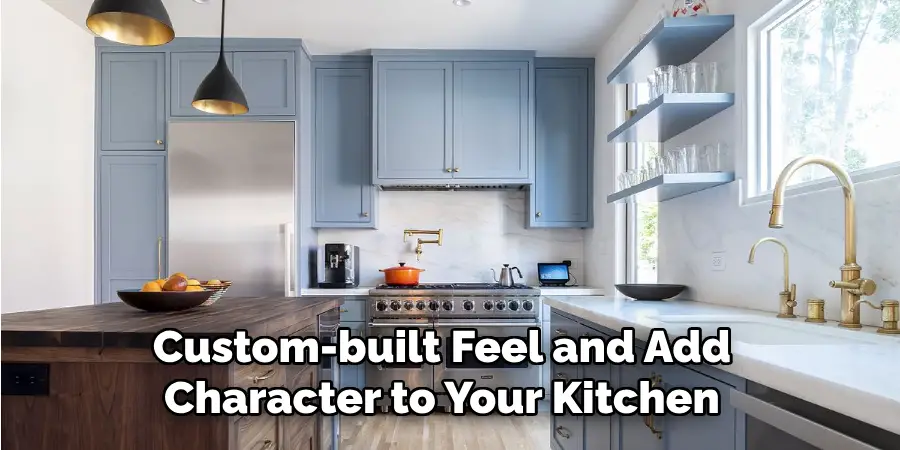
Step 10: Styling Your Cabinets
To really complete the furniture look, it’s important to style your cabinets with decorative items such as vases, plants, or even a small lamp. This will add personality and warmth to your kitchen and make it feel more like a homey living space rather than just a functional room. It’s all about the small details! You can also add a rug or runner in front of the cabinets to tie everything together.
Step 11: Enjoy Your New Furniture-Like Cabinets!
Congratulations, you have successfully transformed your kitchen cabinets into stylish pieces of furniture! With these simple steps and some creativity, you’ve upgraded the look and feel of your kitchen without spending a fortune. Now it’s time to sit back, relax, and enjoy your newly furnished space. Who knew that making your cabinets look like furniture could be so easy? So don’t wait any longer – give this project a try and see for yourself the amazing results!
Step 12: Enjoy Your New “Furniture” Cabinets!
Voila! With these simple steps, you have transformed your ordinary kitchen cabinets into stylish pieces of furniture. Sit back and enjoy the cozy atmosphere they create in your kitchen. And don’t forget to show off your DIY skills to all who enter! So why wait any longer?
Give this project a try and see for yourself the amazing results. You’ll be surprised by how much of a difference it can make in your home! So go ahead, get creative, and let your kitchen cabinets shine with the look of furniture.
Following these steps on how to make kitchen cabinets look like furniture will not only give your kitchen a new and improved look but will also add value to your home. So whether you’re looking to sell or simply want to upgrade the look of your space, making your cabinets look like furniture is a simple and cost-effective way to achieve that goal.
With so many options for finishes and hardware, you can truly customize the look to fit your personal style. So roll up your sleeves and give your kitchen cabinets a furniture-inspired makeover today!
Frequently Asked Questions
Q1: Is It Necessary to Sand Down the Cabinets Before Painting?
A1: Sanding is recommended to create a smooth surface for the paint to adhere to, but it’s not always necessary. If your cabinets are in good condition and already have a smooth finish, you can skip this step. However, if your cabinets have a rough texture or some imperfections, sanding can help to create a more polished look.
Q2: Can I Use Any Type of Paint for This Project?
A2: For the best results, it’s recommended to use paint specifically designed for furniture or cabinets. These are usually durable and come in various finishes such as matte, satin, or gloss. Using regular wall paint may not provide the same level of durability and longevity.
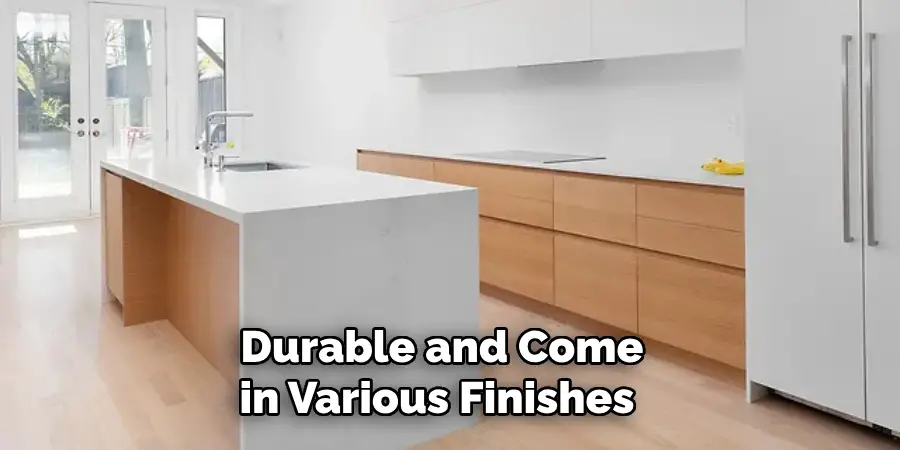
Q3: How Long Does It Take for the Paint to Dry?
A3: The drying time will depend on the type of paint used and the environment you’re working in. Generally, it takes about 24 hours for the paint to dry completely. However, it’s always best to follow the instructions on the paint can for specific drying times and recommendations. So be patient and allow sufficient drying time before moving on to the next step.
Q4: Can I Use This Method on Any Type of Cabinet Material?
A4: Yes, this method can be used on most types of cabinet materials such as wood, laminate, or MDF. Just make sure that you choose paint and techniques suitable for your specific type of cabinets. For example, if you have laminate cabinets, make sure to use a primer specifically designed for that material for optimal adhesion.
Conclusion
To ensure that your kitchen cabinets look like furniture, take your time and make sure you make the right decisions. Be confident in whichever style or design you decide to choose – it is up to you and should reflect who you are as a person.
If you feel overwhelmed with the process of making decisions, consider using experts to help guide you in making the right choice. It’s important to not rush into any decision and make sure everything is just right.
So go turn those plain kitchen cabinets into magnificent pieces of furniture, that will keep guests marveling at your ability to transform a room! Now let’s create! Thanks for reading this article on how to make kitchen cabinets look like furniture.

